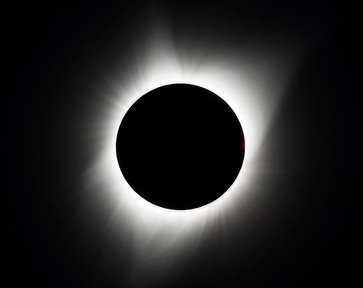Quiz Answer Key and Fun Facts
1. A solar eclipse occurs when what celestial object passes between the Earth and the Sun, casting a shadow in the Earth?
2. Which of the following is NOT the name for a type of solar eclipse?
3. During eclipse seasons, which happen several times a year, a solar eclipse will happen when the moon is at or near which phase?
4. There are between two and five solar eclipses, somewhere on Earth, each year.
5. Roughly how long is the time interval between total solar eclipses occurring on Earth?
6. What term do astronomers use to describe the moment when the Moon and Sun first appear to touch at the start of a total eclipse?
7. At second contact, a bright string of lights can be seen along the edge of the lunar darkness. What are they called?
8. Even at totality, a layer of the Sun's atmosphere can still be faintly seen around the Moon's shadow. What is the name for this part of the Sun?
9. Which of these is closest to the time during which the Sun will be completely covered during a total solar eclipse?
10. In 1919 the Eddington experiment used a total solar eclipse to test a prediction made by what scientist in his General Theory of Relativity?
Source: Author
looney_tunes
This quiz was reviewed by FunTrivia editor
rossian before going online.
Any errors found in FunTrivia content are routinely corrected through our feedback system.
